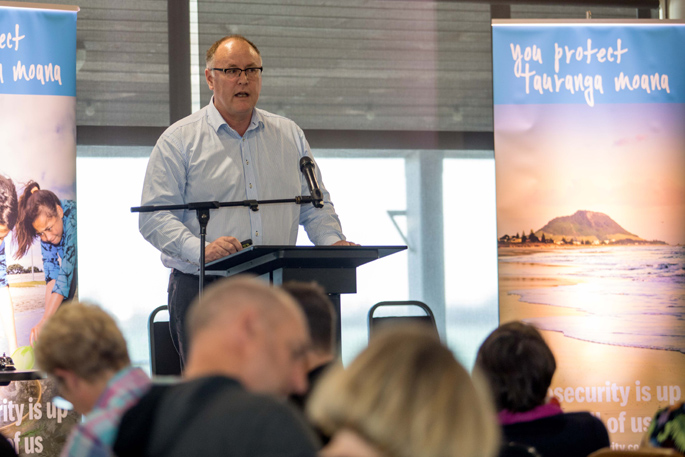The number of countries posing a brown marmorated stink bug risk to New Zealand has been increased from 16 to 33, says Biosecurity New Zealand’s director of readiness and response John Walsh.
“We will now require importers to have higher risk goods from those countries fumigated offshore,” says John, which he told 80 people who attended the second Tauranga Moana Biosecurity Capital excellence symposium in Tauranga in October.
“BMSB is an unwanted organism of extreme concern nationally, and the Bay of Plenty in particular. In conjunction with a number of Government Industry Agreement partners, we are launching a new national 24-week surveillance programme.
The high season for BMSB detection in NZ runs until April 30.
“It is funded jointly by Biosecurity NZ and industry and will have 80 sites to conduct surveillance around the country, based on risk. We have three detector dogs trained and ready to go at the border and post-border and have a clear operational plan to guide response.”
Myrtle rust
While the aim is to keep MBSB out of New Zealand, John says windblown Myrtle Rust was now well established here. However, research work is continuing, assisted by $39million in funding during the next 10 years. Myrtle rust affects NZ plants including pohutukawa, Manuka, rata, kanuka, swamp maire and ramarama, as well as commercially-grown species such as eucalyptus.
John says researchers have found a couple of fungicides and wetting agents which, in laboratory conditions, look promising for control around specific trees – but not in a large environment, so these need to be taken out into the field.
“Myrtle rust is now found at every location where we thought it might pop up and it continues to be a big concern. The key focus is the science programme.
“We’ve completed the first phase this year with 20 research projects including seed banking and understanding the disease impacts. Some programmes need to carry on with further research.”
Meanwhile, the establishment of a national pest management plan for kauri dieback had “hit a road bump” as funding was not included in the latest government budget, says John. “We’ve done a lot of work to get that back on track and a number of government agencies are working together to give fresh advice to Cabinet Ministers to get kauri dieback agencies up and running.
“I hope this work will see fruition later this year or early next year – but be reassured we are working very hard on that at the moment.”
Act up for review
Biosecurity NZ had recommitted to the Biosecurity 2025 strategy and was working with a steering group to rescope and reset the programme.
The Biosecurity Act is also up for review, says John. “It’s a large old act, which needs significant modification for challenges we are facing with biosecurity today – especially the increasing risks of movement of goods and people and climate change.”
John says a consultation package on what should be contained in the new act would go out to the public in the first quarter of next year. “I encourage everyone, especially the grassroots biosecurity community, to get involved.”



0 Comments
Leave a Comment